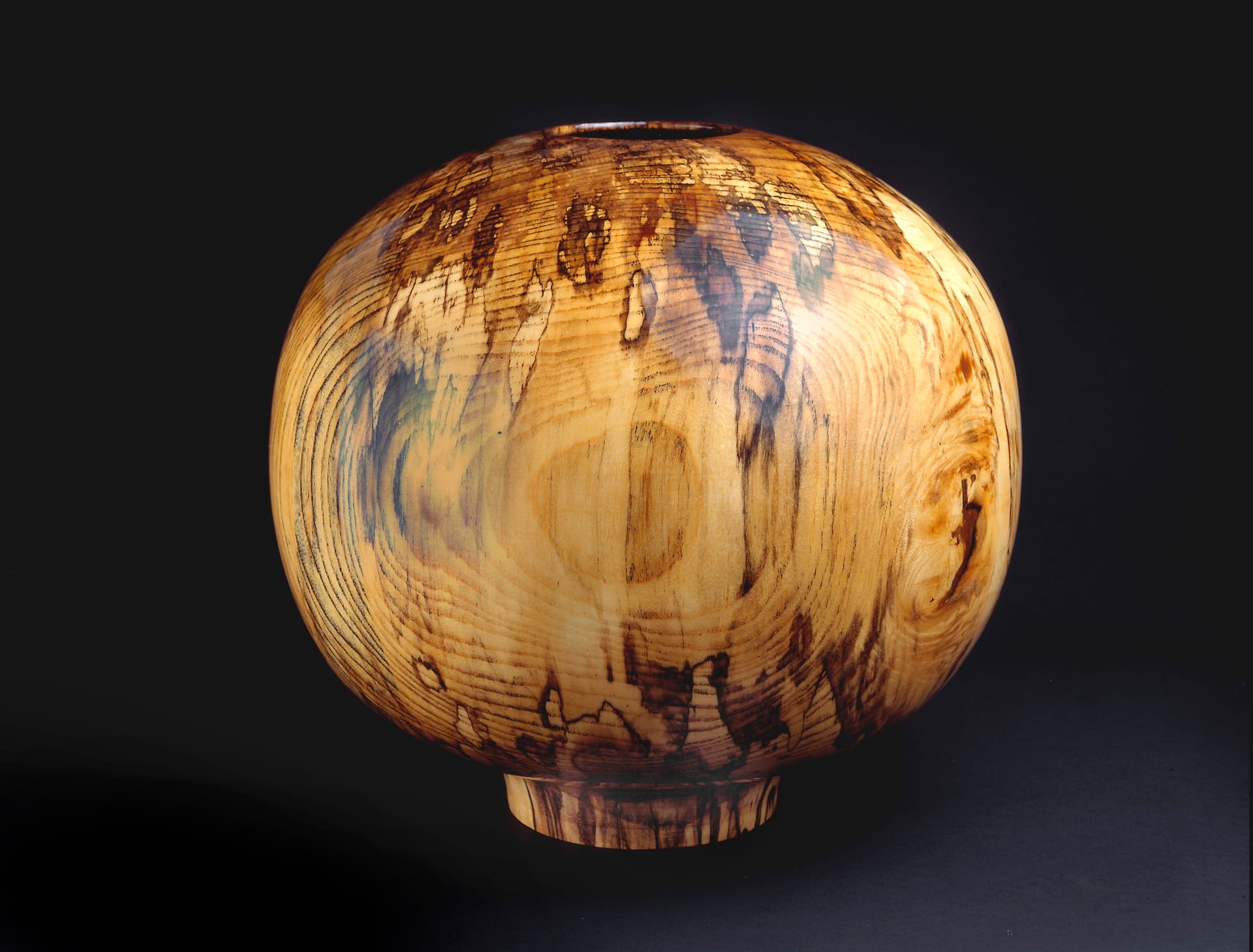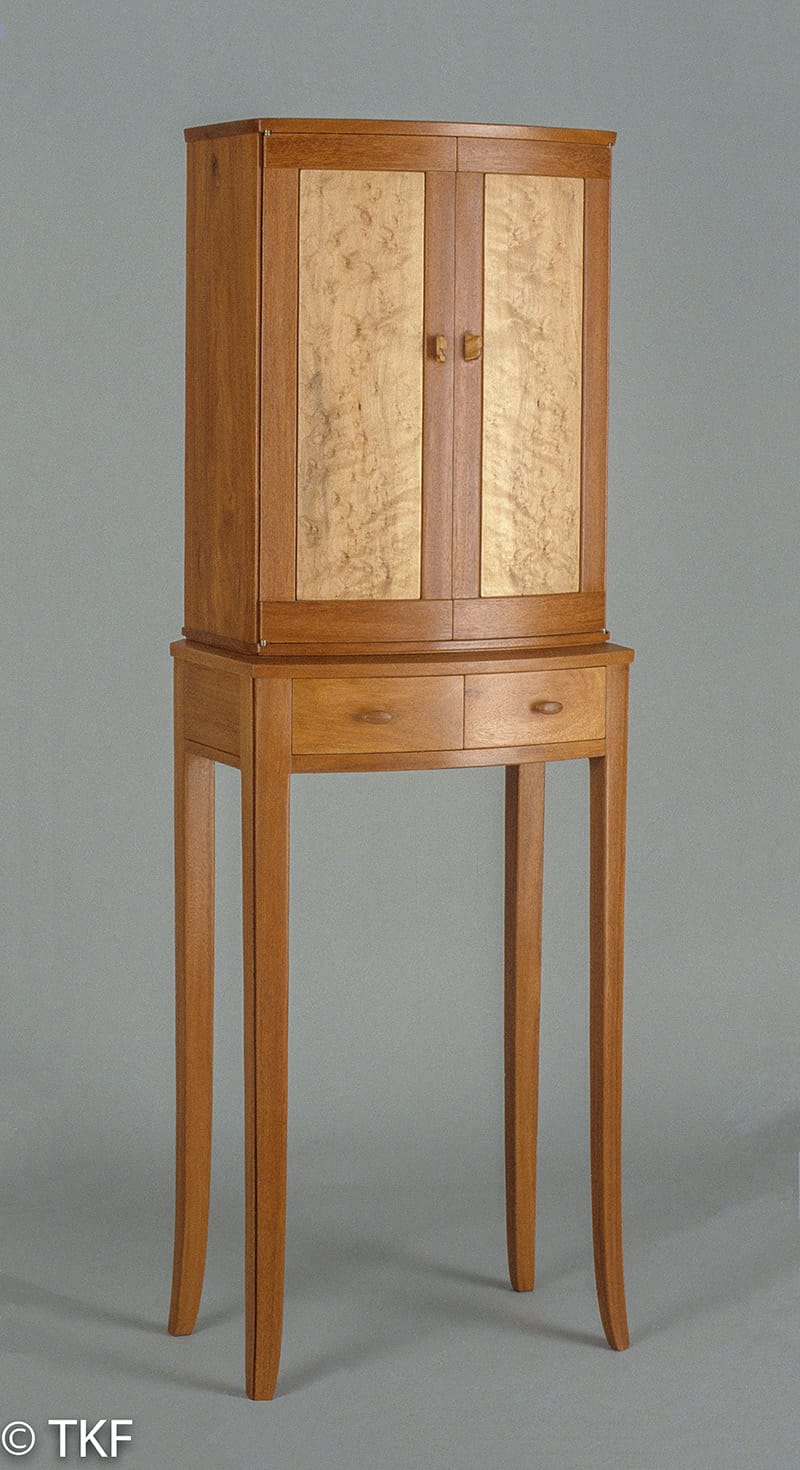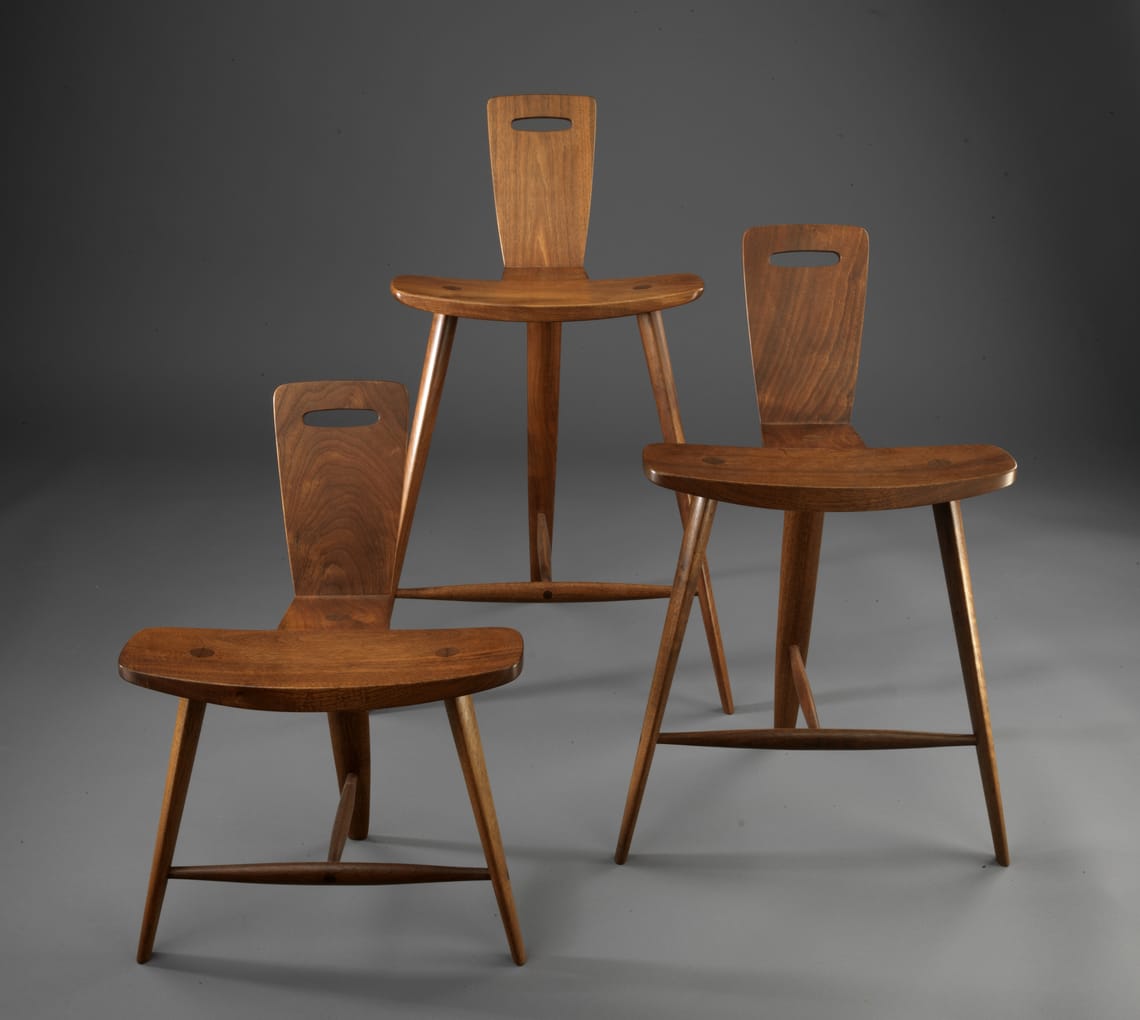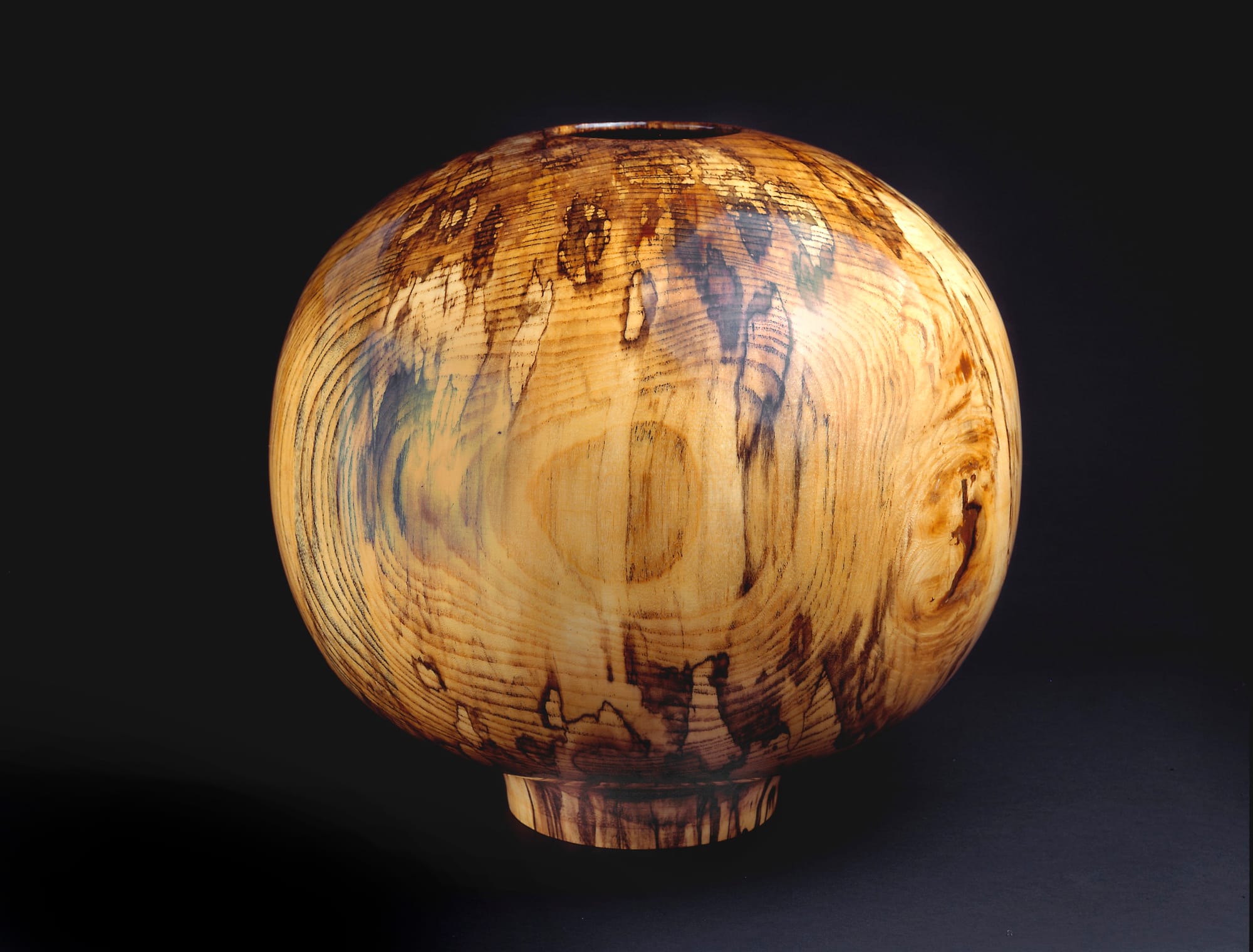
The Life and Education of Edward Moulthrop
Edward Moulthrop's journey from architecture student to renowned wood artist was shaped by his formal education and early career experiences. His academic pursuits and architectural background laid the foundation for his innovative approach to woodturning.
Early Life and Architectural Beginnings
Edward Moulthrop was born in 1916 in Rochester, New York. He grew up in Cleveland, Ohio, where he developed an early interest in woodworking as a teenager.
To fund his hobby, young Edward sold magazines. This entrepreneurial spirit would serve him well in his future artistic career.
Moulthrop's passion for design led him to study architecture at Case Western Reserve University. He earned his B.A. in Architecture in 1939, setting the stage for his future work.
After graduation, Moulthrop moved to Atlanta, Georgia. There, he began his career as an architect, working on key structures in the city.
Academic Pursuits at Princeton and Case Western Reserve
Moulthrop's thirst for knowledge took him to Princeton University for graduate studies. He earned his M.F.A. in 1941, further honing his design skills.
His academic journey didn't end there. Moulthrop later joined the faculty at Georgia Institute of Technology, sharing his expertise with aspiring architects.
This combination of practical experience and academic pursuits enriched Moulthrop's approach to design. It would later influence his unique style of woodturning.
Moulthrop's education in architecture gave him a strong foundation in form and structure. These skills would prove invaluable when he began creating his massive wooden bowls.
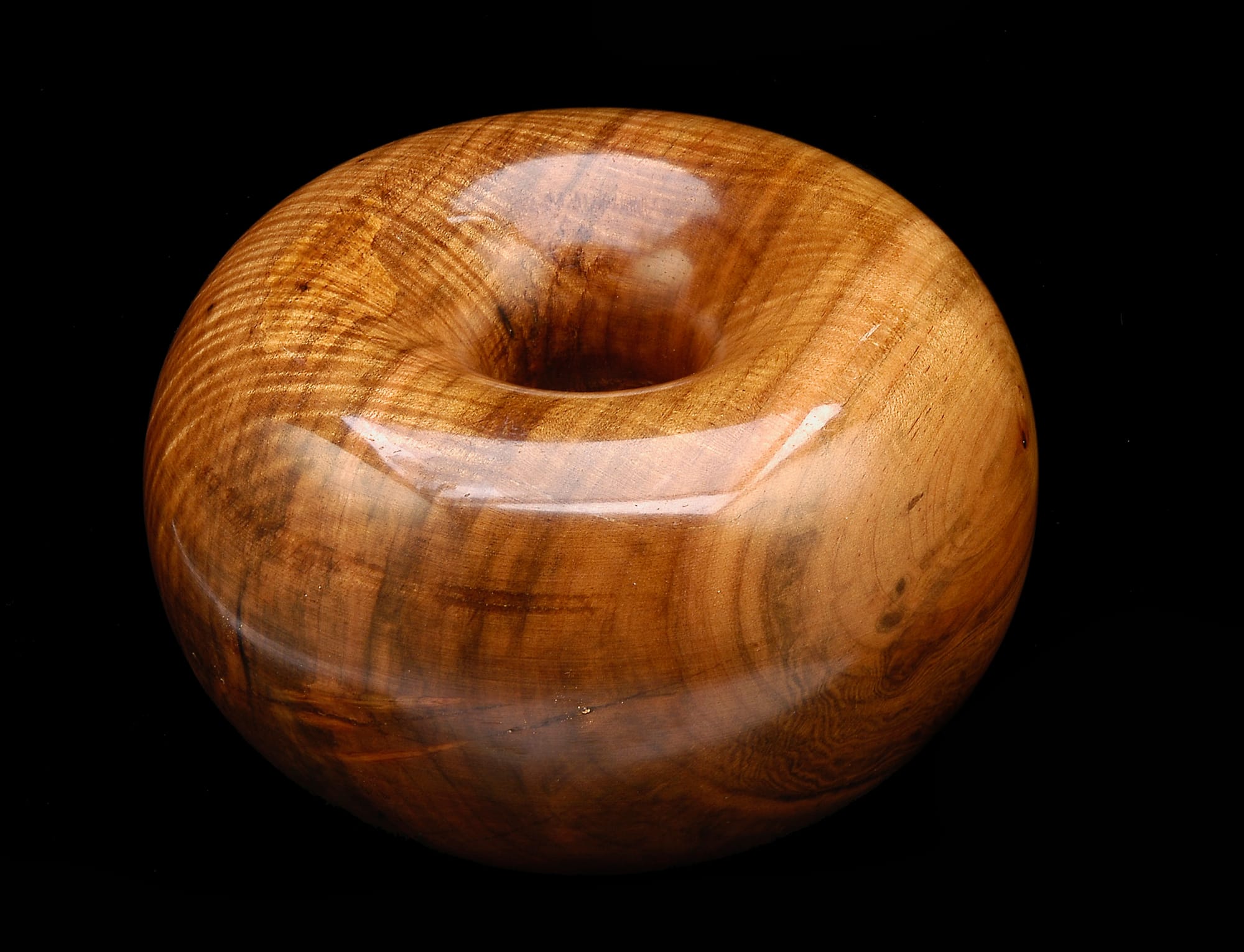
Artistic Transition to Woodturning
Edward Moulthrop's shift from architecture to woodturning marked a pivotal moment in the art world. His innovative techniques and use of materials revolutionized the field, elevating woodturning to a respected art form.
From Architecture to Art
Ed Moulthrop's journey to woodturning began in the 1950s. As an accomplished architect, he designed notable structures in Atlanta. But his passion for wood soon took over.
Moulthrop started experimenting with a lathe in his spare time. He found joy in transforming raw wood into smooth, curved shapes. His architectural background influenced his artistic vision.
He focused on creating large-scale bowls, some reaching up to 40 inches in diameter. These pieces showcased the natural beauty of wood grain and color. Moulthrop's work quickly gained recognition in the art world.
Revolutionizing Woodturning Techniques
Moulthrop's approach to woodturning was groundbreaking. He developed new methods to work with green wood, which is fresher and more pliable than dried wood.
To prevent cracking, he soaked his pieces in polyethylene glycol. This chemical replaced the water in the wood, stabilizing it. He then applied a clear resin finish, enhancing the wood's natural luster.
Moulthrop also invented tools to suit his needs. He created a steady rest to support large pieces on the lathe. This allowed him to turn bowls much larger than previously possible.
His techniques opened up new possibilities for woodturners. Artists could now create bigger, more stable pieces. Moulthrop's innovations helped transform woodturning from a craft into a respected art form.
The Significance of the Moulthrop Bowls
Edward Moulthrop's turned vessels changed the world of woodturning. His bowls blended art and craft in new ways. They inspired other artists and wowed gallery owners.
Unique Designs and Craftsmanship
Edward Moulthrop's bowls stood out for their size and beauty. He made giant vessels up to 40 inches wide. This was rare in woodturning at the time.
Moulthrop used unusual woods like tulipwood and hackberry. He let the wood's natural patterns shine. His clear finishes showed off knots and grain.
The bowls had smooth, curved shapes. They felt both modern and timeless. Moulthrop's background as an architect helped him create these forms.
His methods were also new. He made special tools to work with big pieces of wood. This let him turn bowls larger than most thought possible.
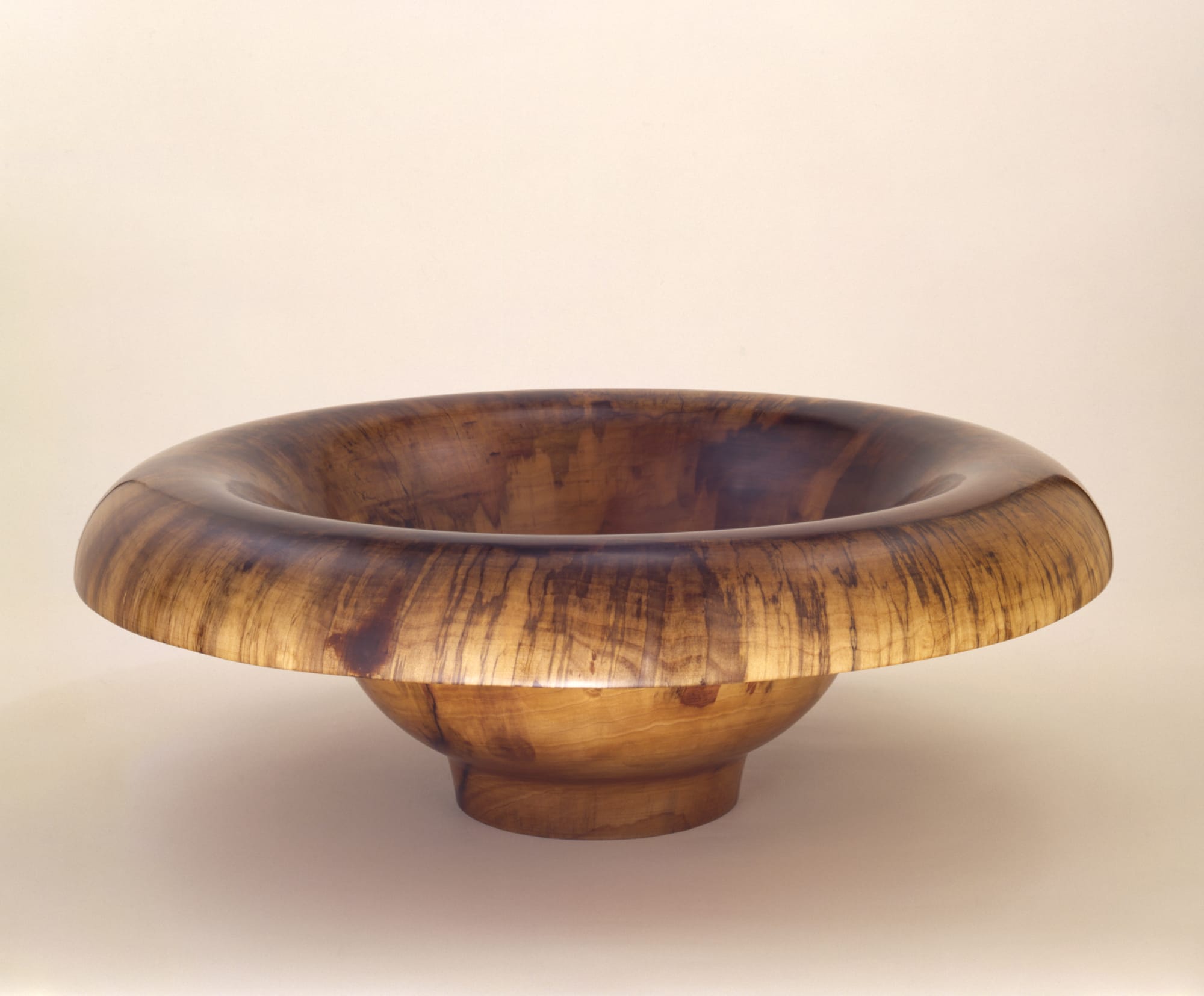
The Moulthrops' Legacy on Modern Woodturning
Edward Moulthrop earned the title "Father of Modern Woodturning". His work changed how people saw turned wood. It went from craft to fine art.
Gallery owners took notice. Moulthrop's bowls appeared in top museums and collections. This helped other woodturners gain respect as artists.
The Moulthrop family kept innovating. Edward's son Philip and grandson Matt carry on the tradition. They each bring their own style to woodturning.
Today, the Moulthrop name is known worldwide. Their work inspires new artists. It shows how a craft can become high art.
Moulthrop's Impact on American Craft
Edward Moulthrop transformed woodturning from a practical craft into a respected art form. His innovative techniques and massive scale bowls reshaped how artists and collectors viewed turned wood pieces.
Exhibitions and Permanent Collections
Moulthrop's work gained recognition in major art institutions across the United States. The Metropolitan Museum of Art in New York and the Renwick Gallery of the Smithsonian American Art Museum both featured his pieces in exhibitions.
His bowls became part of prestigious permanent collections. The White House Collection of American Crafts and the Museum of Arts and Design in New York acquired Moulthrop's works. This placement in renowned institutions elevated the status of woodturning as a whole.
The Museum of Modern Art also recognized Moulthrop's contributions. His inclusion in their collection helped bridge the gap between traditional craft and contemporary art.
Community Influence and Craft Education
Moulthrop's success inspired a new generation of woodturners. He freely shared his techniques and knowledge with other artists. This open approach helped grow the woodturning community.
Many schools began offering woodturning classes because of Moulthrop's influence. Craft education guides often featured his work as an example of excellence in the field.
Moulthrop's legacy continues through his family. His son and grandson carry on the tradition, further spreading the art of woodturning. Their work ensures that Moulthrop's impact on American craft endures for years to come.
Recognition and Celebrated Works
Edward Moulthrop's wooden bowls gained widespread acclaim, captivating art collectors and institutions alike. His work caught the attention of political figures and celebrities, further cementing his legacy in the world of woodturning.
Notable Exhibitions and Ownership
Moulthrop's artistry earned him prestigious exhibition spaces across the United States. The Renwick Gallery in Washington, D.C., showcased his work, highlighting its architectural qualities. His pieces also found homes in notable institutions.
The University of Georgia's library proudly displays Moulthrop's creations. These exhibitions helped introduce his art to a wider audience, sparking interest in woodturning as a fine art form.
In New York City, galleries featured his bowls, drawing art enthusiasts from around the world. Atlanta, Georgia, Moulthrop's home base, became a hub for viewing his work.
Celebrity and Political Endorsements
Moulthrop's bowls caught the eye of influential figures, including former President Jimmy Carter. Carter, a fellow Georgian, became an admirer of Moulthrop's craft.
Political dignitaries often received Moulthrop's bowls as gifts, spreading their appeal in government circles. These endorsements boosted the profile of woodturning as an art form.
Celebrities also took notice. Moulthrop's pieces graced the homes of various public figures, adding to their cachet. This star power helped elevate woodturning from a craft to a respected art medium.
Preserving Moulthrop's Artistic Heritage
Edward Moulthrop's legacy lives on through various initiatives and institutions dedicated to woodturning. These efforts ensure that his innovative techniques and artistic vision continue to inspire future generations of artists and craftspeople.
Educational Outreach and Resources
Craft in America has played a key role in preserving Moulthrop's artistic heritage. The organization offers a wealth of resources, including video interviews, educational guides, and a comprehensive Craft Resources Map.
These materials help students and enthusiasts learn about Moulthrop's techniques and artistic philosophy. The PBS series featuring the Moulthrop family has been particularly influential in spreading awareness of their work.
Many galleries and museums also contribute to this educational effort. They organize exhibitions, talks, and workshops centered around Moulthrop's art. These events give the public a chance to see his pieces up close and learn from experts in the field.
Moulthrop-Related Institutions and Programs
Several institutions are dedicated to preserving and promoting woodturning as an art form. The Center for Art in Wood in Philadelphia, for example, houses a collection of Moulthrop's works and offers programs related to his techniques.
The American Association of Woodturners supports local chapters across the country. These groups often host demonstrations and workshops inspired by Moulthrop's methods.
Many art schools now offer woodturning courses that draw heavily on Moulthrop's innovations. These programs ensure that his techniques are passed down to new generations of artists.
